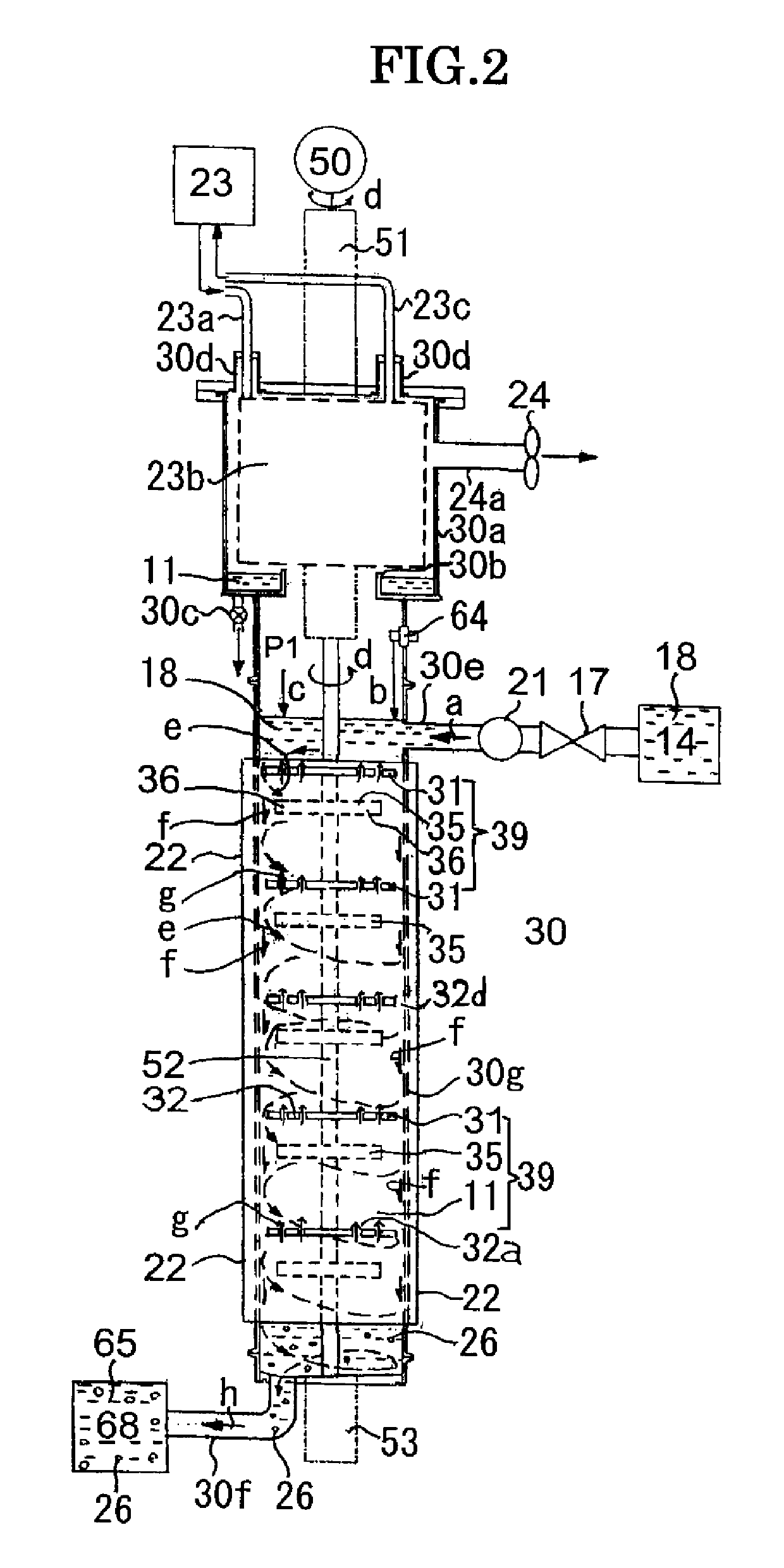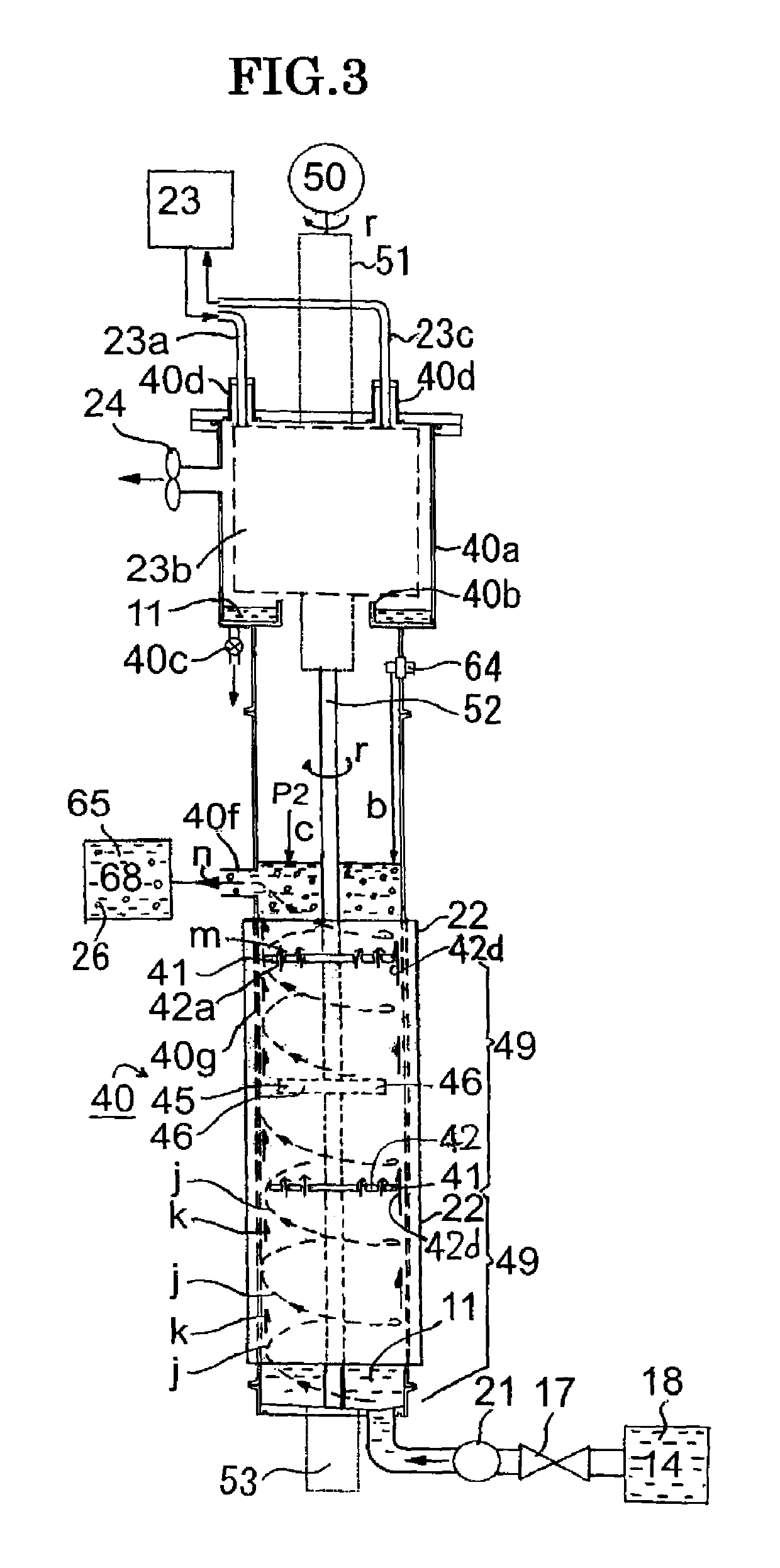Nanoparticle production method, production device and automatic production device
a production method and nanoparticle technology, applied in the field of nanoparticle production methods, can solve the problems of difficult uniform particle size, small amount of substances, cruel cohesion, etc., and achieve the effects of high synthesis rate, high efficiency, and fast synthesis rate of nanoparticles
- Summary
- Abstract
- Description
- Claims
- Application Information
AI Technical Summary
Benefits of technology
Problems solved by technology
Method used
Image
Examples
first example
The First Example
[0090]FIG. 1 is a front diagram of the first example of the nanoparticle production apparatus concerning the present invention, and the series type nanoparticle production apparatus of the first reaction tube (fall flow) and the second reaction tube (lift flow) is shown. In the following explanation, after explaining the outline regarding to the construction of the first example, the function of each member is explained along the streaming process of the ingredient liquid 18 in the ingredient liquid retention tank 14. In addition, in the first reaction tube 30 and the second reaction tube 40, the same code is referred to the same member or the member having a similar function and its description is omitted partly. In addition, the nanoparticle includes not only the nanoparticle without the organic coating layer but also the composite nanometal particle with the organic coating layer formed around the metal core, and the composite nanometal particle is simply called ...
second example
The Second Example
[0100]FIG. 2 is a front diagram of the second example of the nanoparticle production apparatus concerning the present invention, and the nanoparticle production apparatus of single reaction tube (fall flow) is shown. In the second example, the reaction rube is composed of only the first reaction tube 30 which is shown in FIG. 1, and a difference with the first example is that the generation liquid retention tank 68 is connected to the outflow end 30f and the generation liquid 65 is saved. Therefore, the same code is referred to the same member, and as far as there is not special dissimilarity, the detailed description is omitted.
[0101]In the second example of FIG. 2, the reaction of the ingredient material and the solvent 11 in the ingredient liquid 18 is completed or approximately completed in the first reaction tube 30, and the nanoparticle 26 is generated. The reaction time can be appropriately arranged based upon adjusting of the supply flow rate of ingredient ...
third example
The Third Example
[0102]FIG. 3 is a front diagram of the third example of the nanoparticle production apparatus concerning the present invention, and the nanoparticle production apparatus of single reaction tube (lift flow) is shown. In the third example, the reaction rube is composed of only the second reaction tube 40 which is shown in FIG. 1, and a difference with the first example is that the ingredient liquid retention tank 14 is connected to the bottom face of the second reaction tube 40 through the electromagnetic valve 17 and the pump 21 and the ingredient liquid 18 is supplied from this ingredient liquid retention tank 14 and from the lower portion of the second reaction tube 40. In the same manner, the same code is referred to the same member, and the detailed description is omitted.
[0103]In the third example of FIG. 3, the ingredient liquid 18 is directly supplied to the second reaction tube 40, and although the lift flow k (called the lift annular spiral flow, too) is for...
PUM
| Property | Measurement | Unit |
|---|---|---|
| diameter | aaaaa | aaaaa |
| diameter | aaaaa | aaaaa |
| temperature | aaaaa | aaaaa |
Abstract
Description
Claims
Application Information
 Login to View More
Login to View More - R&D
- Intellectual Property
- Life Sciences
- Materials
- Tech Scout
- Unparalleled Data Quality
- Higher Quality Content
- 60% Fewer Hallucinations
Browse by: Latest US Patents, China's latest patents, Technical Efficacy Thesaurus, Application Domain, Technology Topic, Popular Technical Reports.
© 2025 PatSnap. All rights reserved.Legal|Privacy policy|Modern Slavery Act Transparency Statement|Sitemap|About US| Contact US: help@patsnap.com



